IC ALUMNI MAGAZINE
SUMMER 2025
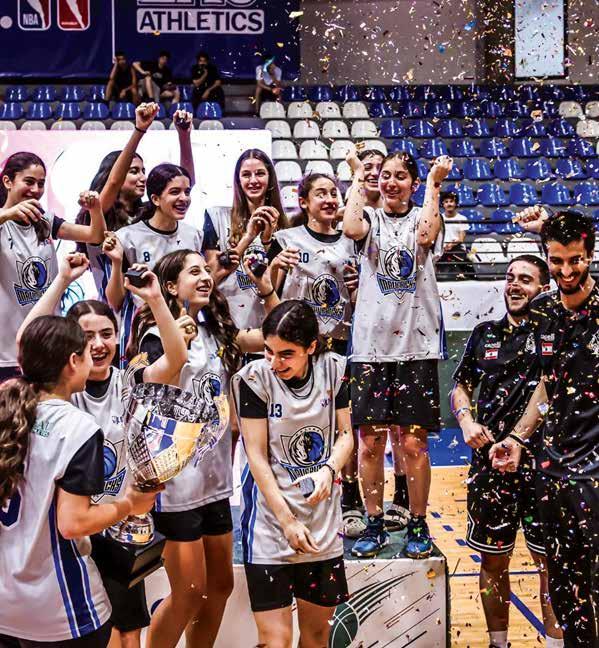


Message from the President
The Day before the Ceasefire: Martin House as a Refuge
Swimming Toward the Olympics: Lynn el-Hajj ’25
In Memory of Becky: Karim Kattouf ’01’s Tech-Driven Mission for Social Good
The Keeper of the Lost Stories of Beirut: Tarek Kawa ’76
The Volunteer Circle
The Cosy on Cosy Story: A Young Entrepreneur’s Rise to Success
Curating the Past: A Life Devoted to Orientalist Art
The Design Revolution: Bridging Beirut and the World
Q & A with Layal Tayara PYP Coordinator
Athletics
Dinners & Events
Alumni Updates
In Memoriam
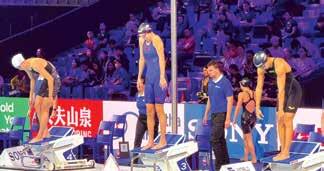
EDITOR/WRITER: Reem Haddad | LAYOUT: Tala Tabbara
COVER PHOTO: For the first time, our IC Mavericks, with players from Ras Beirut and Ain Aar, won the Junior NBA Girls U14 League. The game was hosted by LAU Jbeil, May 2025. | PHOTO CREDIT: Junior NBA
Board of Trustees
Selim Bassoul
Wael O. Bayazid ‘70
Frederik O. Crawford
Walid Daouk ‘76
T.M. (Mac) Deford
Bayard Dodge
Samer Doughan ’83 (Ex Officio)
Amal A. Ghandour
Melissa Gordon
Marylana Saadeh Helou ’04
Gerrit Keator
John Khabbaz
Marwan A. Marshi ‘79
Safwan Masri
John G. McCarthy, Jr.
Christopher McGrath
Maher Mikati ‘98
Mirna B. Noujaim
Mouhamad Rabah
Ian Reed
Matthew A. Reynolds Mu’taz Sawaf
Donald J. Selinger
Talal K. Shair ‘83
Rabih Shibli
Imad Taher
Maya Tohme (Nassar)

As I reflect on my first year at International College, I am filled with deep appreciation for this remarkable community. When Stephanie and I arrived in August, Lebanon was in a time of great uncertainty. We were both met quickly with the sobering reality of war. Almost immediately, I was faced with tough decisions; the most pressing being whether to keep the school open amidst the instability.
With the support of our faculty, staff, and Board of Trustees, IC chose to remain with inperson learning while also offering an online option for families who needed to relocate during this time. I firmly believe this dual approach was the right one — balancing safety, access, and continuity of learning for our students.
During the war, IC faculty and staff continued to press forward each day with their teaching. At the same time, we launched several efforts to support members of our community who were displaced by the war, all the while staying true to the values that define this college.
This year, I have also seen many changes across IC. As we all know, the only constant in life is change. And while change can sometimes feel uncomfortable or uncertain, it also brings opportunities. Benjamin Franklin once said, “Without continual growth and progress, such words as improvement, achievement, and success have no meaning.”
IC has long been recognized as one of the finest schools in Lebanon, if not the best. But we cannot simply rely on past accomplishments. Earlier this year, our leadership team read Good to Great. One important lesson from the book is that the greatest obstacle to achieving greatness is being satisfied with being good. Part of our mission at IC is to inspire and challenge every learner, and that includes all of us as educators and staff. As we close out the year and look ahead to the next school year, we are committed to several key initiatives:
• Power of Zero — Promoting character development, anti-bullying, and positive school culture.
• The Breakthrough Coach — Strengthening leadership practices and building effective administrative teams.
• The Charlotte Danielson Group — Enhancing teacher growth through a proven framework for professional practice.
• The Positivity Project — Building a culture of character strengths and positive relationships across our community.
• Doing one thing well — Focusing on excellence in fewer areas, rather than spreading ourselves too thin.
• Streamlining our systems — Improving internal processes to serve students, families, and staff better. Thank you for your trust and support. I look forward to continuing this journey of growth together with you.
Trustees Emeriti
Makram N. Alamuddin ‘61
Mona Bawarshi ‘67
Said S. Darwazah ‘76
Peter H. Gerard
Anthony Jones
Anwar Al Mulla ‘63
Aida Reed (Luce)
Mohammed S. H. Al-Soleiman ‘59
Khalid Al-Turki ‘61
William H. Turner
Richard S. Ward
Tobin Wait – President
Moufid Beydoun ‘64 – Vice President for Alumni & Major Gifts
Talal Jundi ‘86 - Vice President & Chief Financial Officer
Dr. Mahmud Shihab – Vice President for Education Services
Tania Hayek – Director, Human Resources
Zeina Abou Khalil – Principal, Early Childhood and Elementary, Ain Aar
Maya Chebaro ‘05 - Principal, Middle School, Ras Beirut
Malda Halawi– Interim Principal, High School
Kathy Khayatt – Principal, Elementary School, Ras Beirut
Lara Kmeid - Principal, Middle School, Ain Aar
Dr. Ghada Mahdoun ‘97 – Principal, Early Childhood, Ras Beirut
Tuesday, November 26, 2024. Martin House. Dinner time.
Toby and Stephanie Wait were trying to hold a normal conversation. As normal as one could be with Israel’s onslaught on Lebanon in the background. Not that they could hear it—a blessing in one way, but a curse in another, having to rely on instant news. Suddenly, the phone began to beep. They sighed, dreading what would come next. More attacks. Where was it this time? The already shattered Dahia? The Bekaa? The South?
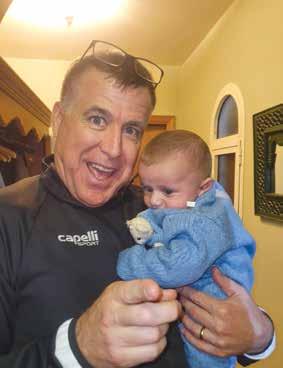
But the beeping was incessant, and the couple was alarmed. Suddenly, a call from a school administrator broke through. “Something’s about to happen,” he said. “Israel is about to bomb this area—Ras Beirut, Hamra.”
Still reeling from the news, the couple was told that a handful of teachers in the secondary school, working late, were holed up on campus—too afraid to go home. Moreover, the traffic out of the city was horrendous as people fled, desperate to avoid getting caught in an attack.
The couple quickly made their way to the Rockefeller Building, intending to invite the teachers to Martin House. But the building was empty. Maybe they had gone home, but the Waits decided to check the other school buildings just in case.
No sooner had they walked into the Middle School than they spotted a few teachers standing around - about four or five of them, talking on the phone, desperately trying to get some news and reassure their families of their safety.
“Come to Martin House,” said the Waits. “You can stay there with us.”
The teachers, however, pointed to the stairs leading to the lower floors. “The Lebanese automatically shelter in the basement,” they explained. “There are more of us down there.”
Curious, the Waits made their way down to the lowest floor, the parking lot, expecting to find just one or two more teachers. As they opened the door to the dark basement, they immediately felt the weight of many eyes
on them. As their eyes adjusted to the darkness, they were stunned by the sight of more than 25 teachers and staff. Some had found chairs to sit on, while others sat on the floor, and a few stood. Some even had their children and cats in carriers with them. It was clear they had gone home, those who lived within walking distance, grabbed their loved ones and returned. Almost everyone was staring at their phones, casting an eerie light in the dark basement. Hunched over, eyes fixed on the news, they desperately sent messages back and forth.
“Please, come to our home,” the Waits urged. “It’s safe there.”
The Israelis wouldn’t dare bomb the house of the IC president – an American IC president, after all. An American school next to an American university. Moreover, the Saudi Arabian embassy is nearby. Surely, they wouldn’t bomb the area, or would they?
Suddenly, the list of targets in Beirut was announced on the news, and a wave of panic surged through the crowd. Stress levels skyrocketed, and even the children stared in fear. Faculty and staff followed the Waits out of the basement and set off to Martin House. As they walked through the campus, more people emerged from various buildings and joined them.
“I felt like I was in a movie,” said Stephanie Wait. “It was so surreal.”
Altogether, more than 40 teachers and staff—along with children and cats, filled Martin House. The door opened, and suddenly, a few secondary school students appeared. They were quickly ushered in. The IC president sent a message to the IC community, declaring Martin House a safe haven for anyone feeling in danger.
Soon after, the doorbell began ringing—again and again. More faculty and staff arrived — some with their families, who, after spending hours stuck in traffic, ultimately returned to the school for refuge. Some were visibly paralyzed with fear, while a few quietly sobbed.
Snacks and drinks somehow materialized. In the midst of it all, Stephanie Wait had the foresight to call her parents, her husband’s parents, and the couple’s four children in the US, assuring them of their safety and urging them not to be alarmed by the news reports on American television.
Then came the sound of distant explosions. Ras Beirut was being targeted. The MK drone above was practically deafening.
As the night wore on, the Waits began organizing sleeping arrangements for everyone. Around 11:30, however, two teachers volunteered to venture outside to assess the situation, including the traffic. When the message came through saying that all was clear, a frenzy of people began leaving Martin House, heading home.

With only two guests remaining, the Waits prepared to go to bed. It had been a trying night, a soul-searching one. Both firmly believed they were in Lebanon for a purpose and were convinced this was where they were meant to be.
Toby Wait declared Wednesday, November 27, a day off.
A day later, IC opened its doors as usual.
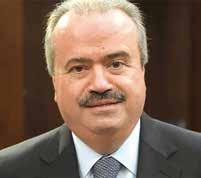
Yassine Jaber ’70
Minister of Finance
At 4 a.m. on Wednesday, November 27, the ceasefire between Israel and Hezbollah went into effect, promising to end nearly 14 months of cross-border fighting that had killed thousands of people, displaced 1.2 million Lebanese civilians, and destroyed large swaths of southern and eastern Lebanon. Beirut’s southern suburbs lay in ruins, with tens of thousands of houses reduced to rubble by Israeli airstrikes.
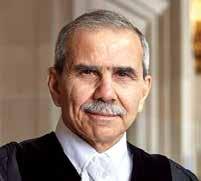
Dr Nawaf Salam ‘71 Prime Minister
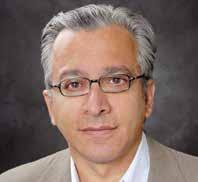
Dr. Amer Bisat ’81
Minister of Economy and Trade
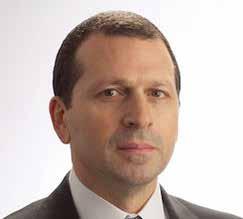
Dr. Kamal Shehadi ’82
Minister
for the Displaced and State Minister for Technology and Artificial Intelligence
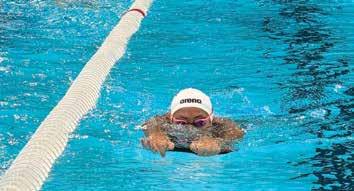
5
am: When most teenagers are deep in slumber, and the world outside is still dark and quiet, Lynn el-Hajj’25 is already awake - the weight of the day ahead already drawing her from the warmth of her bed.
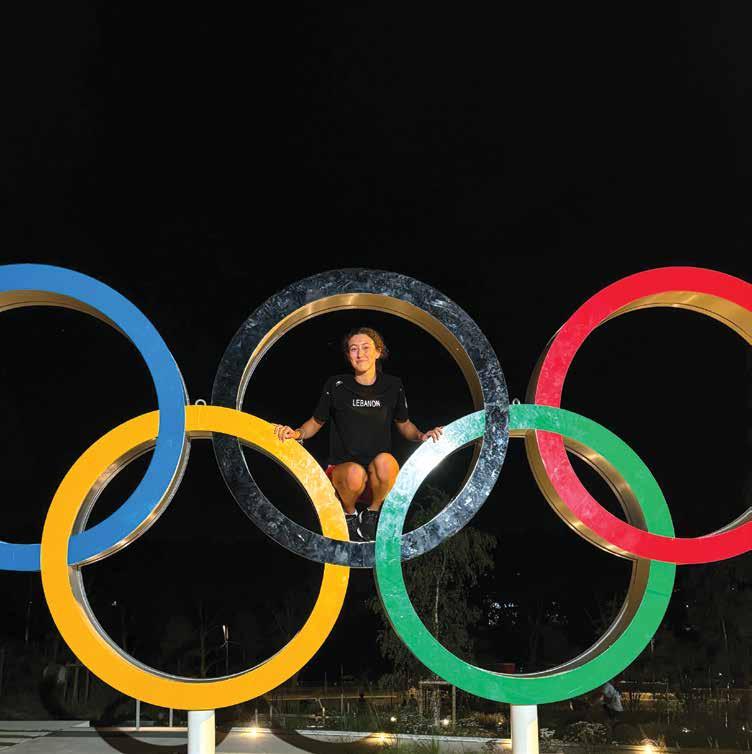
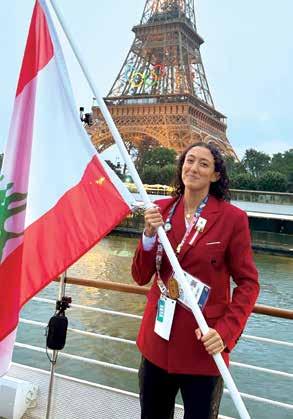
She pulls on either a swimsuit or gym clothes, the cold air biting at her skin as she steps out into the silence. No hesitation. No second thoughts. Ahead of her is an hour of grueling exercise—before the school bell even rings. No shuddering, no procrastination, no whining. Empty your mind. Two more hours of swimming after school, hours of homework, and then, finally, bed.
Day in, day out. Morning in, morning out. The goal is getting closer. Keep going. Keep practicing. Empty your mind. Swim. Feel the water. Swim. Feel the muscles. Swim. Feel the adrenaline pumping. The body aches, but there’s no time for it. There is nothing out there. Just the water. The strokes. One after the other. Keep going. Keep swimming. The goal: Olympics 2024.
It’s a whirlwind existence. Classes, exams, gym, homework, swimming, deadlines, projects, flights, hotels, competitions, more competitions, medals. Enough to faze any adult, let alone a teenager. The days blur together—each one a haze of schedules, competitions, and schoolwork. There’s no time to pause. No room for questions. Go to the next race. Reach the next goal.
But Lynn takes it all in stride. The curls in her hair bounce with every step, her wide smile captivating.
“I made it,” she said simply. “I am an Olympian.”
In the summer of 2024, Lynn el-Hajj and Simon Doueihy were chosen to represent Lebanon in the Olympic swimming competitions. Lynn would compete in the women’s 100-meter breaststroke, representing Lebanon as the country’s only female swimmer in the Paris 2024 Olympic Games. At just 17 years old, she was already the Lebanese champion, Arab champion, and record holder in the 50m, 100m, and 200m breaststroke.
It felt like a dream. The athletes, the Olympic village, the roaring crowds. Located in the heart of Paris, the village was home to athletes from over 200 Olympic and 180 Paralympic delegations, each bringing their own dreams and cultures. Amidst it all, her doting parents and four siblings stood by as steadfast support in the crowd.
“Just enjoy it,” her mother had told her. “That’s what you are here for.”
She needed to hear that. No pressure. Here was the crowning moment of her years of hard work. From the first lessons at the age of three to her teen years, every step had led her here.
“I actually owe my start to IC,” she said. “I was on the swimming team.”
Later, she became part of the Al Jazeera swimming team, a club based at Bain Militaire, and “my whole life changed,” she said.


It was a relentless cycle of training and competitions. These events took her worldwide, from Hungary to Dubai to Japan. “I knew from the start where I was heading,” she said. “The more I competed, the closer I got to the Olympics.”
It was no easy task. As an IB student, she had to balance the demanding workload of the program with the many weeks of missed classes. Her friends took detailed notes and passed them on. Teachers, when possible, extended deadlines. Her parents gave her the unwavering support that she needed (“I am grateful to them!”)
The rest was up to her. How much will and discipline did she truly have?
It was the ultimate test of character.
In the water, there was nothing. Only the rhythmic motion of her arms and legs, slicing through the water, pushing forward with every stroke.
One minute and 10.27 seconds later, it was over. The lifetime of training had come down to this.
Short, but glorious. So very glorious.
“I did it,” she said. “It was the best moment in my life.”
“ I did it. It was the best moment in my life.”
And now, the Olympics was the stage for that test. She took her place on the bench alongside the other competitors, waiting for her turn. Empty your mind. Block them out. She put on her headphones, listening to her cherished music. She let it wash over her, drowning out the world around her.
Suddenly, it was her turn. She removed her headphones, and the noise hit her like a crashing wave. Empty your mind. Block them out.
She took her place at the pool’s edge and eyed the water. Once she was in, the world would cease to exist. Hang in there. The whistle blew. Dead silence in the crowd. She hit the water. Empty your mind.
This was the pinnacle mind game – one she had been preparing for her entire life: the ability to empty her mind. It was like a switch. Empty your mind. And it was flicked.
A week after returning to Lebanon, signing autographs for random people who recognized her, Lynn was back on the plane – headed to the Arab Championship.
The beginning of the Israeli-Hezbollah war in September sent the family to Greece. There, she continued training – but on her own.
The war over, they returned to Lebanon, and she immediately dove back into her whirlwind existence: training, competitions, intense IB work, and catching up on missed classes. IB2 exams were approaching, leaving no choice but to miss a few competitions.
No matter, she thought. The coming years will be full of competitions —and she intended to make every one count.”
Lynn el-Hajj will continue her studies at the American University of Beirut as a Business Management student. She plans to join the AUB swim team.

On December 16, 2017, 30-year-old British diplomat Rebecca Dykes, affectionately known as “Becky,” climbed into a taxi for a ten-minute ride home after a girls’ night out in Gemayzeh. She was especially excited, knowing that she would fly home to England in a few days to spend Christmas with her family.
Becky never made it home. A few hours later, her body was found in a ditch along the Metn highway.
She had been raped and strangled.
The brutal crime shook the nation.
Like everyone else in the country, Karim Kattouf’01 couldn’t believe the news. A foreign woman—let alone a diplomat—murdered? Passionate about humanitarian work and an advocate for those in need, Becky was leading projects across Lebanon to improve the lives of impoverished communities. Who would want to kill her? Then, Jane Houng reached out to him. “I am the mother of Becky,” she said. “I am coming to Lebanon. I was told that you could help me.”
It was a mutual friend who had referred Houng to Kattouf, and he immediately made himself available. But what comfort could he possibly offer a distraught mother whose child had just been senselessly murdered?
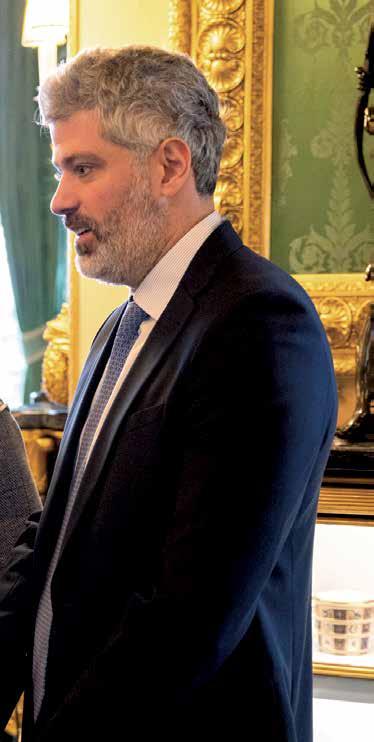
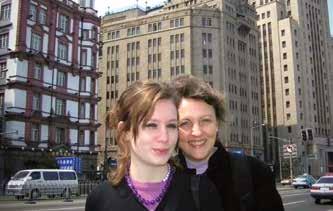
If he expected to meet a broken woman, he was mistaken. Jane Houng was anything but. She had come to Lebanon not only to reclaim her daughter’s body but also to ensure that justice was served.
“She was,” Kattouf recalled, “an amazingly strong woman.”
“I want to continue Becky’s legacy,” Houng said. “I want to keep her memory alive.”
The British diplomat was murdered in a densely populated residential area of Ashrafieh. The taxi driver, feigning a flat tire, pulled over beneath a bridge. But nobody heard her cries.
Houng was determined that her daughter’s fate would not be that of another woman. Turning grief into action, she partnered with Kattouf to create Becky’s Button—a discreet, wearable alarm that emits a piercing 125-decibel alert, loud enough to startle attackers and draw immediate attention.
“We began distributing these buttons across Lebanon to vulnerable women,” said Kattouf, who is one of the main supporters in Lebanon. “The response was incredible.”
The button is part of a broader initiative promoting women’s safety through education, online tools, and support for abuse victims. It fosters awareness and community engagement to build safer communities. Before long, Becky’s Button grew into a global movement that expanded to Jordan, Pakistan, Australia, and the UK.
On December 10, 2024, at Windsor Castle, Houng and Kattouf received the Elizabeth Emblem from His Majesty King Charles III, honoring Becky’s extraordinary life of humanitarian service during her work with the British government across the Middle East. Kattouf found himself standing in the historic Green Drawing Room— where dignitaries from around the world meet with the King.
“I’m from Lebanon,” he said, trying to stifle his awe of the moment.
“Oh, I love Lebanon. I’ve heard a lot about it,” responded the King.
“Well, Your Majesty, it would be an honor for us if you visited Lebanon,” said Kattouf.
The King chuckled. “Your country is very beautiful. I want to come - once you elect a president.”
It was an especially poignant moment for Kattouf. Since childhood, he had always felt a calling to do good. Was it because he was active in his church youth group or involved in various IC social work initiatives? Or perhaps it was his upbringing? He couldn’t quite explain it, but he knew deep down that he had to help whenever possible.
His journey into this social good was somewhat unintentional. After earning his Master’s in business from LAU, he worked as a brand protection manager at Cisco, a global tech company specializing in networking hardware, software, and cybersecurity solutions. He then transitioned into a communications manager role, where he oversaw the communication needs of approximately 600 lawyers worldwide. But his calling to social work truly took shape in 2017 when Kattouf saw his company convert a shipping container into a high-tech emergency medical facility to assist Syrian refugees arriving in Hamburg, Germany.
infrastructure in a rescue mission across the impacted zone.

He also led a crowdfunding campaign, raising $1 million for relief efforts, and launched a social media drive to locate a missing Ethiopian woman during that time. Like a storybook unfolding, a young Lebanese woman in the Ivory Coast saw the calls for help from the disaster site and gathered them all on one page. Among them was the photo of the Ethiopian woman. Shortly after, Kattouf received a call from the American University Hospital. They had a “Jane Doe” case involving a comatose woman matching the picture. After crowdfunding for medical care, Kattouf helped her return to Ethiopia and fund her dream of opening a café in Addis Ababa.
In 2021, Kattouf used his tech expertise to partner with Embrace, a prominent Lebanese non-governmental organization, and establish a mental health hotline to prevent suicides.
Kattouf decided to replicate the project in Lebanon. He shipped a container to the Bekaa, wired it for telemedicine, including remote psychiatric consultations and communication with loved ones, and made it available to all the area’s residents.
He soon earned the nickname “ the charity guy” for using technology to help others.
In 2020, Kattouf set up a Wi-Fi hotspot in Mar Mikhael after the Beirut Port Explosion, enabling volunteer communication and aid tracking. To address high 4G costs, he installed a free Wi-Fi mesh network with 50+ access points, partnering with IDM, a local internet provider, NetHope, a global non-profit driving tech for good projects. Chilean volunteers later used the

“The turning point for me was witnessing the catastrophe in Lebanon,” he said. “Seeing what the country was going through made me realize I needed to get involved. I started small, and it snowballed into all these big things we’re doing now.”
As for Becky’s Button, which has become his calling, a deep friendship has developed between Kattouf and Jane Houng, who recently attended his wedding in Lebanon. “She is part of my extended family now,” he said. “Together, we keep Becky’s memory alive.”
For more information about Becky’s Button: https:// beckysbutton.org/
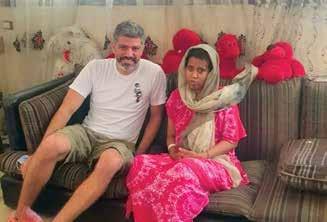
Ironically, as a young student, Tarek Kawa ‘76 found history boring. Who cared, anyway? But more than forty years later, it became his passion— an accidental one, some might say.
He “accidentally” fell into it when he joined Solidere as a Communications and Public Relations spokesperson—a fortunate twist of being in the right place at the right time.
source: Blogspot
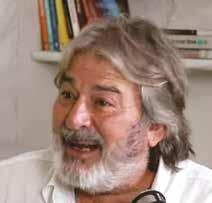
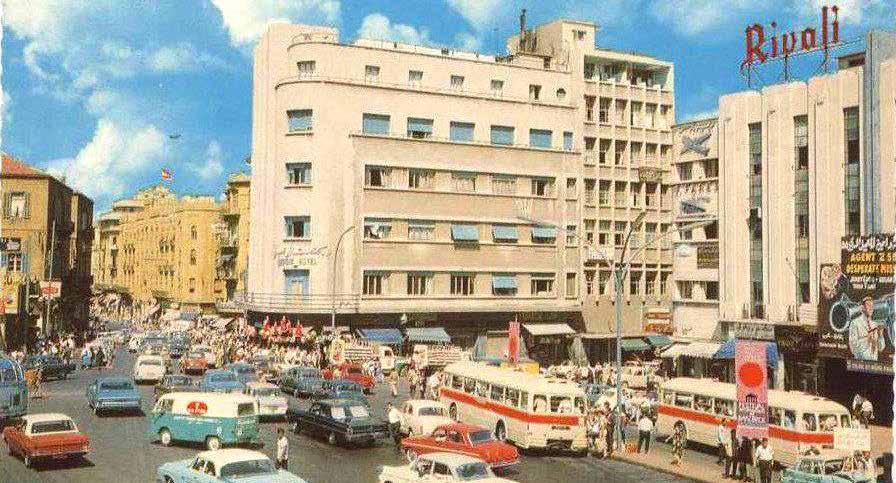
It was the early ‘90s, and the country was still reeling from the effects of the civil war. Solidere, a real estate company, was established to rebuild Beirut’s city center.
“I had all this knowledge, but most of the people working in the company didn’t know the difference between one street and another,” he said. “They had names, wit, and resourcefulness but lacked the memories.”
It was up to Kawa to talk about the different souks—where they came
from, what they were, who frequented them, and how to get there. With the master plan in front of him, he added his memories to the presentations being shared with scholars, investors, and people from all walks of life.
As construction began, layers of Canaanite, Phoenician, Hellenistic, Roman, and Ottoman civilizations unfolded beneath the city’s capital.
The remains of nearly 5,000 years of successive civilizations confirmed a long-held belief that Beirut was
founded as early as 3,000 B.C., predating Jerusalem, Athens, Damascus, and other present-day capitals.
With each discovery, Kawa felt an overwhelming excitement. He stood alongside archaeologists as find after find was unearthed: a Hellenistic quarter, a Byzantine commercial site, some 27,000 square feet of mosaics, Roman ruins, and, most exciting of all, the Cardo Maximus, the main northsouth street of Roman Beirut.
“The feeling was unbelievable,” he said. “I cannot describe it. It was out of this world.”
As an eyewitness and firsthand recipient of the daily archaeological finds, he felt compelled to research these discoveries. As spokesperson, he felt a responsibility to piece together the puzzle for the real estate company. “There were many questions that needed to be answered”, he said.
An avid reader, he delved into every book he got his hands on. As the hidden layers beneath the souks stirred to life in his mind, boyhood memories came rushing back. He saw himself helping his father at the family’s four textile shops in Souk Al-Wiaaieh, their shelves lined with fabrics imported from Manchester, England, his mother’s hometown. It was his job to clean up after customers and sweep the shops. He also accompanied his father’s worker, Khalil, on daily rounds through the souks, collecting whatever was needed from one stall to the next. He loved the souks—the noise, the color, the scent: Souk al-Tawileh gleamed with gold, fashion, and sweets. Nearby, Souks Ayass and Arwam brimmed with silk and cotton. Souk al-Jamil smelled of leather, its artisans crafting shoes and belts. In Souk al-Nahhasin, hammers rang against copper, while Souk al-Attarin filled the air with cinnamon, rosewater, and saffron. At Souk al-Sagha, goldsmiths shaped delicate jewelry under warm light. Throughout it all, vendors called out,
children darted between stalls, and café boys weaved through the crowd with trays of mint tea.
Little did Kawa know back then that treasures lay beneath his feet. Nor could he imagine that the souks he cherished would be reduced to ruins and memories in just a few short years.
Why not record these stories and get them out there as quickly as possible?
Gifted with a hakawati narration style, he began recording his stories—a blend of memories, some his own, confirmed through reading, and others he discovered through his research, all merged with his stories. In 2022, he began sharing them in his IC WhatsApp group until one alumnus commented, “What a waste to limit these stories to just us. Let’s create another group dedicated solely to your tales.”
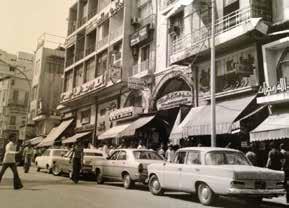
In 1975, the war began and quickly took a heavy toll. Kawa still had a year left at IC but left for Manchester to complete his studies. Despite the distance, he kept in touch with his friends from IC and eventually returned to Lebanon. It was at Solidere that Kawa uncovered his uncanny memory. He spent countless hours researching, reading, and verifying details from various sources and books, ensuring that every fact and date was accurate and reliable. Before long, he became the storyteller of every gathering. So much so that people would ask, “Why don’t you write these stories down?”
“Why not indeed?” thought Kawa. Then, another thought struck him:

At first, Kawa was skeptical— but he created a group anyway, unsure if anyone would join. To his surprise, 1,000 people signed up within days, hitting the limit. So, he started more groups, along with Facebook and Instagram pages. “I never thought it would take off like this,” he said. “The stories went viral. Sometimes, people even forward me my own recordings!”
Nothing brings him more joy than when the younger generation tunes in. “I want to preserve these memories for them,” he said. “I want to instill a sense of pride. We have a rich heritage. Their mother, grandmother, and grandparents were there, buying from these souks. This was a part of their lives.”
Kawa’s next project is a podcast in which elders reconstruct the past by sharing their memories of old Beirut. To join Tarek Kawa’s WhatsApp group, visit the following link:
https://chat.whatsapp.com/ JQSLbIYKVsE8EPkAHsHuQs
Souk el Tawileh, one of Beirut’s oldest markets, began as a residential area before transforming into a bustling commercial hub. By 1887, it had grown so crowded that the municipality had to widen the streets. In the 1960s and 70s, it became renowned for chic fashion and imported goods from Europe. Notable figures like jeweler Rouphael Homsi revolutionized the market by offering custom designs, while famous shops like Goldenberg sold Austrian imports. Over time, Souk el Tawileh became a cultural and commercial center, with landmarks like Al-Ajami restaurant and the L’Orient-Le Jour building, preserving Beirut’s rich heritage.
In the past, bathhouses were not just for bathing; they were a family destination akin to a picnic. People would bring towels, soap, henna, loofahs, food, fruits, sweets, and even the arguile for a day spent together. Bathhouses also played a key role in wedding traditions, with men using them at night and women during the day.
The bathhouse was spacious, often with rooms called “khallwat” for families to rent and enjoy privacy. The tradition dates back to Roman times when baths featured hot, warm, and cold rooms. Beirut continued to have public baths throughout the Ottoman and French mandate periods until private bathrooms became part of modern homes.
One key tradition was the groom sending the bride a “bride’s towel” or bath bag, symbolizing his generosity. If the gifts inside were scarce, it was said the marriage would be difficult. Bathhouses were also venues for grand feasts and parties, with hundreds of women gathering, adorned in jewelry, and enjoying hookahs and dancing.
Hamra Street’s history dates to 1404, when the Talhouk family lived in the area known as Jurn Al Debb. After a dispute, the Bany Al Hamra family from the Bekaa Valley settled there and named it Karm Al Hamra. In 1407, they used stone from the destroyed Church of the Savior to build their first school.
By 1866, the foundation of the American University of Beirut (AUB) brought significant change to Ras Beirut. In 1914, the area was mostly orchards. Its inhabitants were mostly interested in planting gum trees (eucalyptus trees), since birds were then caught using gum made from the tree as glue. This was seen to be a profitable business. By 1918, the Allies renamed the streets, with Hamra becoming London Street, and the neighborhood began attracting people from inner Beirut.
The first modern house in Hamra was built in 1923 by Professor Sealy, a professor at the American University at the time, and it was where the Horseshoe café eventually would be. Others say that the first building was the Zico House, the building that houses City Pharmacy and where Habib Abou Shahla lived. Everyone agrees that when the Tapline company opened its offices opposite Modca, it marked the
Famous bathhouses included the Fakhreddine bath, the Turkish bath on Maarad Street, and the Zahret Souriya bath in Souk el Tawileh. Among them, the Nuzha bathhouse is the only one that remains today.

beginning of the transformation of Hamra Street from a residential street to a distinctive economic street. In 1933, the governor of Beirut, Salim Bey Taqla, decided to pave Hamra and its surrounding streets, further boosting its financial position. The area transformed from residential to commercial, with shops, cinemas, and restaurants emerging by the 1950s, driven by the growing student population at AUB. Hamra Street became one of the most famous streets in the Middle East.
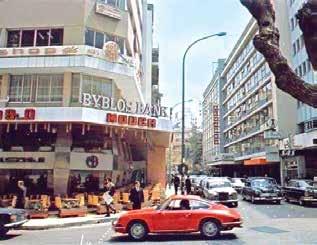
On the bright, sunny day of March 7, 2025
Malak Yacout’15 walked into the Presidential Palace to receive a prestigious recognition: being named one of 30 women honored by Her Excellency the First Lady of Lebanon, Nehmat Aoun, for their unwavering commitment to citizenship and exemplary leadership.
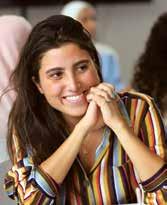
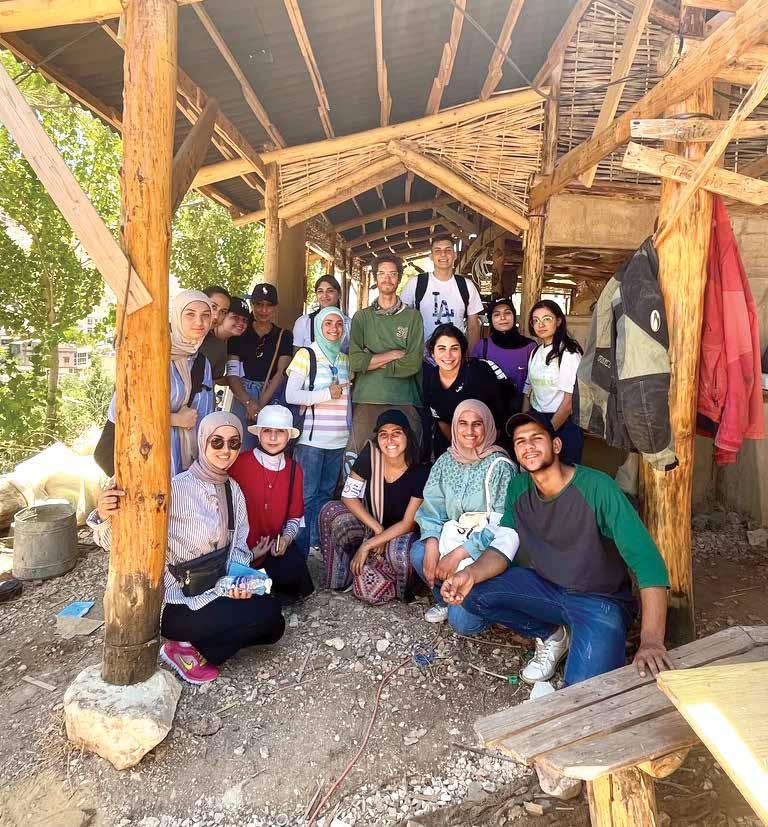
No one could have been prouder than she was at that moment.
Theoretically, Yacout should not have even been there. She was on a path toward a career in advertising and marketing. Indeed, after graduating from AUB in precisely that field, she received top-tier internship opportunities at highend companies abroad.
But there was a crossroad: take that road and a brilliant career with a lucrative salary awaited. It was the route many aspiring advertisers and marketers dreamed of— entering the corporate world, enjoying a comfortable life, and reaping the rewards of a wellpaying job.
But take another road, and it would lead to fulfilling a lifelong dream and following her deepest instincts—a life of accomplishment, though less financially rewarding.
It wasn’t even up for debate. Not with her family. Not with herself. It was road number two.
It was a road that led to her muchcherished Volunteer Circle— thus, the recognition by the First Lady.
The idea was simple: Skilled individuals wanted to volunteer, and NGOs and businesses needed them. Missing was the process of linking them together. “Basically,” she said, “it’s a marketplace for volunteerism, especially skilled volunteerism.”
She threw herself into the task — an enormous one at that.
Mission #1: Crowdfund for the project.
Mission #2: Identify additional funding sources, including potential partners and donors.
Mission #3: Identify and list all the NGOs in the country.
Mission #4: Visit them and determine their needs – where volunteers can assist. Make sure there are openings.
Mission # 5: Train NGOs to take in volunteers and match their skills to their needs.
Mission #6: Expand to businesses, corporations, and government agencies.
Mission # 7: Advertise the service across various platforms.
It all sounded good on paper, but Yacout quickly realized she had to shift mindsets. NGOs and businesses
“ I reached people. They signed up! It’s proof that this was needed. I’m truly spending my time where I am meant to be.”
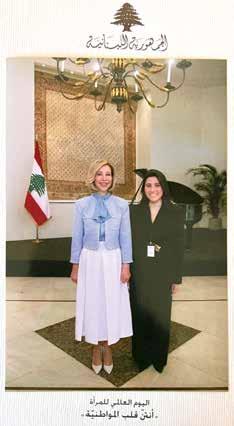
viewed volunteers as a general call for help rather than individuals filling specific roles. What was needed were clear job descriptions with defined start and end dates and measurable impact. “That was the bulk of the work,” she said. “They knew they needed volunteers but couldn’t define where or what.”
She collaborated with NGOs and businesses to identify their needs, using SWOT analysis to turn them
into volunteer opportunities. Though it was long and tedious, it was a necessary foundation for the success of the Volunteer Circle.
Yacout found herself juggling multiple roles, including finance, operations, advocacy, and marketing.
And still barely 22 years old.
“But the most challenging part was shifting mindsets,” she said. “I had no idea at the time that it would require so much effort.”
Others might have given up, but not Yacout. Years ago, she learned to conquer any fears that came her way. Her solution was simple: don’t just see the funny side—share it with others. She boldly took the stage at various venues, trying stand-up comedy. That’s how she learned to embrace whatever came her way.
Nine long and arduous months later, on March 27, 2019, at 8 am, Yacout sat at her laptop in her bedroom and launched the Volunteer Circle.
She waited breathlessly for responses. This moment would define all her work—her reason for giving up a career. The project had consumed her. She was half obsessed, half passionate. Every project in her AUB business courses revolved around the Volunteer Circle. Yacout strategically sought advice from professors and used feedback from her assignments to guide her. Every comment and piece of feedback was carefully noted. She reinvented the Volunteer Circle time and time again.
And now, as they say, was the moment of truth.
One person registered. Then another. Then another.
By the afternoon, 13 volunteers had signed up.
Yacout’s tears flowed. She was elated. “I reached people,” she said. “They signed up! It’s proof that this was needed. I’m truly spending my time where I am meant to be.”
The next day, more volunteers signed up. Then, even more. “It was a snowball effect,” she said.
By the end of the year, the Volunteer Circle had grown to over 1,000 volunteers, ranging in age from 18 to
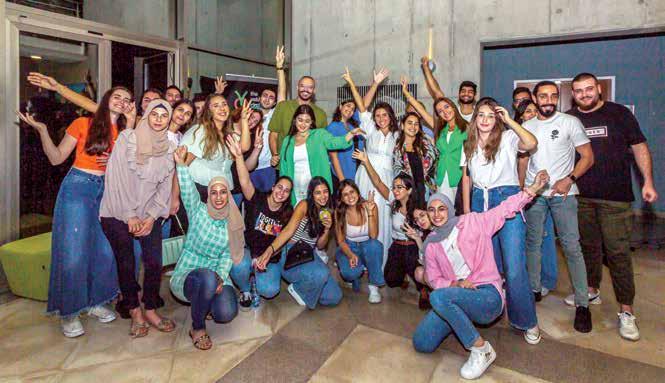
80, with 70% of them under 30. They all received training before being matched with an NGO, a business or social enterprise, or even government ministries.
2020: The Beirut Port Explosion.
Heeding urgent calls for help, Yacout mobilized her volunteers immediately after the Beirut Port Explosion, which destroyed a significant part of the northeastern side of the city. “It was a ready-made community,” she said. “I knew exactly how many volunteers we had and their skills.”
Along with her team, she created a powerful launchpad, enabling over 250 organizations to access more than 4,000 volunteers - saving over $2 million worth of services, connecting hundreds to jobs, and positively impacting the lives of more than a million individuals and households in Lebanon.
By 2025, the number of volunteers had soared to 10,000, many of whom later found employment. By now, the 27-year-old had become one of the youngest EY Entrepreneurial Winning Women Network candidates and a member of the World Economic Forum’s Global Shapers Community.
Today, the Volunteer Circle is a registered nonprofit social enterprise with 10 employees, connecting skilled volunteers with nonprofits, startups, universities, and governments worldwide. It provides tailored volunteer solutions, consultancy services, and impact measurements to improve engagement and results.
Its gamified platform provides real-time, relevant opportunities, while the Volunteer Success Team supports volunteers’ personal and professional growth.
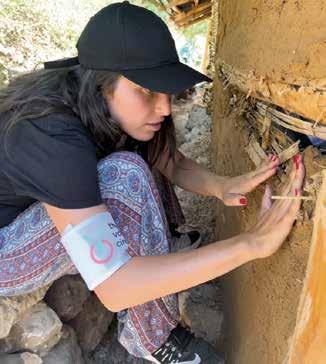
“It was quite a journey, and I learned a lot,” she said. I don’t regret any of it. If I had taken the dream jobs offered, I would have missed out on the breadth of experience I gained from my time in the Volunteer Circle.”
For more information, go to: https://thevolunteercircle. com/
At 17, life is straightforward: I’m cold. I borrow my friend’s hoodie. I’m still cold. I wish the hoodie was knee-length. I need a blanket. Hoodie and blanket. Who cares if it’s oversized? Oversized is in.
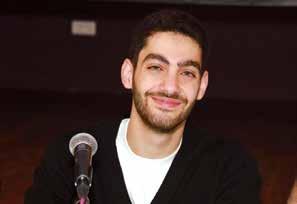
I quickly check if such a thing exists online. It does. I like it. I think my friends will like it too. They look cold. I will get several. I like to sell things. Maybe I can convince my classmates to buy one.
“Dad, can I borrow some money?”
Six years later, Omar Al Tayara ‘19, aged 23, leads one of the country’s most successful start-ups: CozyonCozy. His oversized hoodies are all the rage in schools and homes, keeping many chilly bodies warm. New products hit the market yearly— hoodies for pets, pajamas, weighted blankets, and cooling sheets—with many more in the pipeline.
“ When will I be young again with no responsibilities? If I don’t do this now, when will I.”
But, back to his IC days and his 17-year-old self. His father then gave him $300, probably as an indulgence, if nothing else. Al Tayara ordered 30 hoodies from an e-commerce platform displaying Chinese products. He excitedly told his friends.
Oversized hoodies? They were not impressed. “That’s when I started to worry,” he said. “$300 is a lot when you are 17.”
A few weeks later, the hoodies arrive and find their home on the family’s living room table. His mother was his first customer. His father, the second. A few close friends purchased out of obligation.
The moment of truth had arrived: Would IC students buy them? Al Tayara wore one to class, drawing curious stares. Friends showed support by wearing theirs, too. A few days later, students flocked to him, eager to try one. The trend took off, and Al Tayara was overwhelmed with orders.
Suddenly, the teenager found himself an entrepreneur— though it was the last thing on his mind. He was intent on studying finance to become an investment banker. Still, it was fun and extra pocket money—money he carefully set aside.
A year later, he started AUB with a double concentration in finance and accounting. Meanwhile, sales of the hoodies were doubling, with “absolutely no marketing,” he said.
Orders came in, and he sent his own orders out to China. But now there was an extra touch: the hoodie blanket features a small logo of two bears on the bottom corner –compliments of the 10-year-old sister of a friend. She had agreed to do it in exchange for a free hoodie. Furthermore, Al Tayara and his friends would model the hoodies and share the clips on social media, quickly building a large following.
Then came a strange twist of fate. COVID arrived, and the supplier in China stopped responding to his requests. So, Al Tayara switched to another supplier. When the large shipment of hoodies arrived, he was stunned to find they were much thinner than the original ones. As he surveyed them around his family’s dinner table, it suddenly hit him: What if he sold different thicknesses - at different prices? Would it work?
As it turned out, it did, thus the birth of the Cozy, Husky, and Polar hoodies.
Al Tayara began customizing the hoodie, making it exclusively his own.
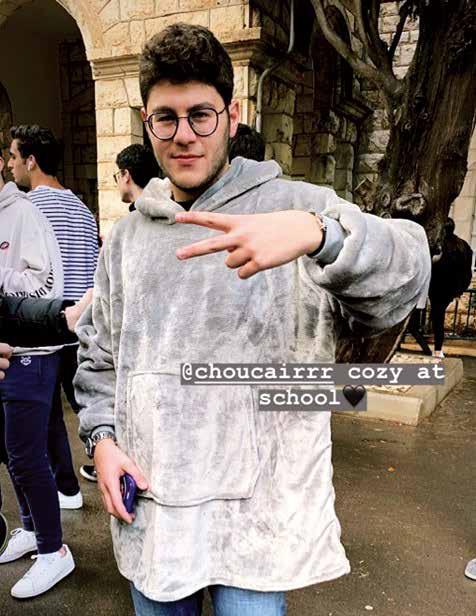
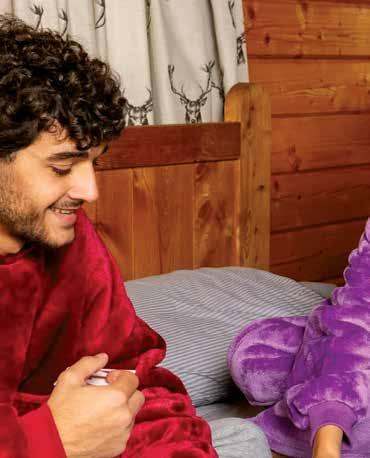
After completing his BA, Al Tayara pursued his Master’s at the London School of Economics. From there, he placed his biggest orders for hoodies and “had no plan on how to sell them whatsoever,” he said.
And so he spent his time between classes, flat, and library, learning how to “sell online and run a business,” he said. Meanwhile, back in Lebanon, his mother answered customer inquiries while his dad fulfilled the orders. Devotedly running the business from the living room—now flooded with hundreds of hoodies—the parents became a comedy duo, trying to figure out who ordered what.
At one point, his father visited him in London and tried to talk him out of the hoodie business, urging him to pursue a corporate job. “When will I be young again with no responsibilities?” Al Tayara replied. “If I don’t do this now, when will I?”
Finally, Al Tayara struck a deal with his father: if he didn’t make $10,000 a month within the next year, he would dissolve CozyonCozy and get a job.
His father not only acquiesced but also found himself accompanying his son to China as Al Tayara wanted to meet his supplier face-to-face. (His father has since sworn never to endure the grueling 11-hour journey again).

“ I don’t consider myself successful. During the last three years, I’ve met younger entrepreneurs from far less privileged backgrounds who have achieved more than I have. I won’t consider myself successful until I truly have a cozy empire.”
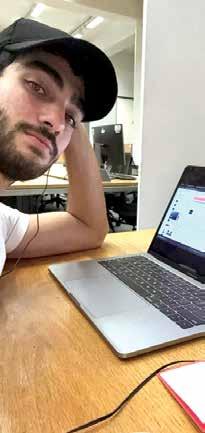
Back in Lebanon, working from various coffee shops that doubled as his office, Al Tayara launched many products, including his biggest hit after the hoodies: cooling bed sheets to combat Lebanon’s stifling heat. He handled the pitch sales calls himself, making over 60 calls a day.
By the end of 2024, Al Tayara had a team of five employees and a long line of successful products.
Came the Israeli aggression in 2024. Al Tayara stared in panic at his vast stock. The country was at war, with no end in sight.
Finally, he pulled his team together. “Listen,” he told them. “We’re going to make this work. Let’s figure out exactly how we will sell.”
Fueled by adrenaline, they spent the next month using every tactic—from emails and social media to personal calls—and hit 95% of their target. They did it. CozyonCozy was back on track.
“Every challenge is an opportunity,” said Al Tayara, with a resolve beyond his years. “I’ve learned a lot from failure—mainly not to be overconfident or over-planned.”
Today, CozyonCozy has expanded to Jordan and Kuwait and will hit the Saudi and UAE markets by July 2025.
The family living room is finally hoodie-free—Al Tayara has upgraded to a warehouse and now has an actual office!
“I don’t consider myself successful. During the last three years, I’ve met younger entrepreneurs from far less privileged backgrounds who have achieved more than I have. I won’t consider myself successful until I truly have a cozy empire (as I like to call it), and I vow to do that by 2030.”
For more information about CozyonCozy, go to: https:// cozyoncozy.com/ or follow Omar on https://www.instagram. com/thatcozyguy_?igsh= MmEzcG9pczBhaWZ0
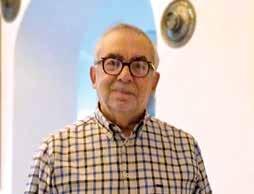
During the 19th century, European artists were drawn to the Orient, captivated by its exotic landscapes, vibrant cultures, and unique peoples, which seemed both inspiring and radically different from European life. Many sought to improve their financial prospects, with the growing accessibility of travel—thanks to advancements in steamships and trains—making these journeys more feasible. Some artists settled in the East for extended periods, while others made shorter visits, eager to capture what they perceived as exotic subjects in their work. These artists contributed to a movement called Orientalism, which shaped European perceptions of the East during that time.

In 1961, Orientalist painters were the last thing on the young mind of Erol Makzume ‘70. He was too immersed in his boarding school life at IC, balancing academics with his passion for athletics.
“I have unforgettable memories from this time,” he said. “I will always remember my football coach, the late Shawki Dammous. After sports, we would run to Mehio to buy refreshments. God bless their souls.”
When not at IC, he split his time among his birthplace, Aleppo, his family’s hometown of Iskenderun, and Beirut.
After obtaining a BA in Chemistry from AUB and a Master’s degree in Quantitative Business Methods from the University of Surrey, he returned to his hometown of Iskanderun to join
the family business in shipping and international transport.
In this coastal town in southern Turkey, a new phase of his life began: a fascination with Orientalist paintings. This passion had been ignited years earlier when he used to gaze in awe at the Orientalist paintings adorning his family villa in Iskanderun. However, it remained dormant as work and family life took priority. Despite this, he continued to invest in works by renowned artists who captured the essence of Istanbul, Asia Minor, and the Middle East. Before long, he had built a sizable collection—each picture cherished and admired.
Fausto Zonaro - Odalisque on the Bosphorus playing the Lute
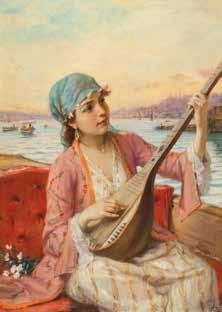
But unlike most art collectors, he felt drawn to the artists behind the works, wondering, “Who are you? What brought you to Istanbul? How did you capture time with your brush and stroke?”

Sometime in the 1980s, he came across some Orientalist works with unknown signatures. Intrigued, he began a lifelong quest to trace the journey of these artists from their hometowns to the Ottoman Empire. It was during this time that he discovered a natural talent for research. He realized he had developed “l’œil du connaisseur” (the eye of the expert judge), which led him to explore the lives of painters before attempting to connect with their work. While exploring, he began collecting rare historical documents, gaining a deeper understanding of the artists and their raison d’être within the mystical Ottoman Empire.
Then, in 1998, a family friend, journalist, and researcher, Osman Öndeş, approached him to see if he would be interested in co-writing a book about Jean-Baptiste Vanmour, a French painter known for depicting Ottoman life in Istanbul with vivid detail. Makzume was captivated by the project, deepening his passion for Orientalist painters and their lives.
A year later, he traveled to Italy to meet the granddaughter of Fausto Zonaro, the renowned Italian painter and official artist of the Ottoman court, famous for his vivid depictions of Istanbul. It was a privilege no art collector could resist. There, he received Zonaro’s memoirs, which offered a glimpse into the artist’s deep love for Istanbul—its lights, colors, and vibrant diversity—that had inspired

his most celebrated masterpieces. This discovery led him to write three books on Zonaro and to curate acclaimed exhibitions around the world.
“The Zonaro research introduced me to the world of 19th-century Orientalist painters,” he said. “It enabled me to collect works of European artists who painted the different angles of our beautiful Middle East. It helped me develop an eye and become a specialist in their works.”
Makzume was hooked. He threw himself into exploring the lives and works of other Orientalist painters, including Leonardo de Mango, who lived in Istanbul but also traveled to Syria, Lebanon, and Libya and taught at Saint Joseph Secondary School
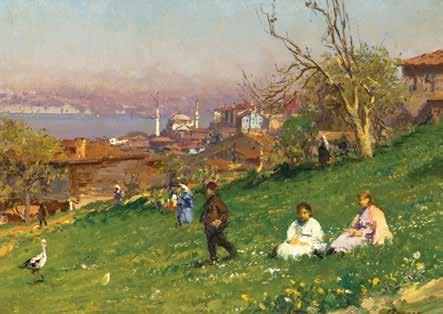
in Beirut. Makzume also researched Alexander Sandor Svoboda, an early photographer of Anatolia’s “Seven Churches,” and was lucky to acquire his painting The Old Port of Ephesus. By chance, he also discovered and acquired a work by Miner Kilbourne Kellogg, the first American Orientalist to travel in Asia Minor.
By 2024, he had written or co-authored 27 books and exhibition catalogs in Turkish, English, and French. He is currently working on his next book, in French, about Leila de Dampierre (Leila Malhamé), a diplomat, poet, and silk painter born in Istanbul to Lebanese parents.
Somehow, between his shipping company, family duties, research, and writing, Makzume manages to
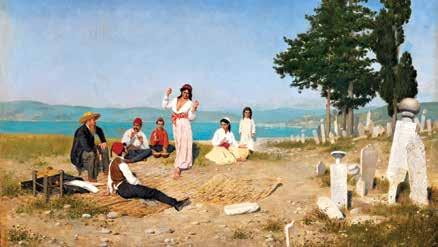
organize exhibitions.
“I explore artists’ lives, inclinations, and travels in the East,” he said. “For a painter like Fausto Zonaro, I may organize a retrospective of his Italian and Turkish works or focus solely on his Istanbul period. As a curator, it’s crucial to ensure authentic works are displayed professionally.”
His collections and books have earned many awards, including the Gusi International Peace Prize 1 and, in 2006, the Cavaliere della Solidarietà2 by Italian President Carlo Azeglio Ciampi for his efforts to promote Italian art and artists in Turkey.
“But the most meaningful to me,” he said, “was when I received the ‘Golden Pin’ at my IC graduation for achievements in various sports and extracurricular activities.”
Among his upcoming projects is an invitation to exhibit his collection at a prestigious venue overlooking the Bosphorus, where the works will be on long-term loan.
For more information about Erol Makzume, go to https://erolmakzume.com/
1. The recognition of arts and culture in promoting peace is growing, with exhibitions, books, and panels contributing to a more just and less violent society
2 Order of the Star of Italian Solidarity

In a true artist’s story, Samer Al Ameen’89 has shown that destiny cannot be denied. The acclaimed industrial designer’s work has been featured in numerous magazines and praised in both local and international design circles.
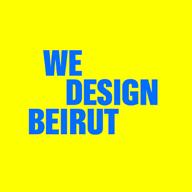
And yet, once, Al Ameen was on the verge of failing his IC and university classes. The breaking point came when a university test asked him, “What is a monopoly?”
In good faith, he spent considerable time drawing up the Monopoly game. He was asked to leave the LAU Business School. “You belong in the creative world,” the professor told him. Al Ameen was startled. Was he truly a creative person? He couldn’t even draw!
And so, he joined the Fine Arts Department and arrived home with canvases, much to his father’s disapproval. But he had found his passion, graduated with straight A’s, and by 29, became the youngest
creative director in the Middle East. He thrived in the advertising industry for 15 years, ultimately serving as Creative Director for the MENA region at McCann Erickson, a global advertising giant. Jetting around the world and earning a yearly six-figure salary, he was at the peak of his career when he chose to leave.
Then, one morning in 2004, he woke up unsure of which presentation he needed to give or, indeed, where he even was—Bahrain, Italy, Dubai?
And just like that, he walked away. “I was bored. I have done it all,” he recalled thinking. “I’m done.”
In 2005, he packed up and moved to Beirut, clueless about what to do next. His family and friends couldn’t understand it. “Crazy,” they said. “Who walks away at the peak of their career and a high salary?”
In Beirut, he ventured casually into
soft advertising. Then, one day, he needed a Khayzaran chair—an iconic Ottoman piece—for a photo shoot but couldn’t find one. So, he designed a stainless steel version himself and showcased it as a limited edition of 200 pieces at SMO Contemporary Art Gallery in Beirut.
The next thing he knew, his chair was making headlines in several international magazines. And just like that, he stepped into a new career—industrial design. Did he know anything about it? Not really.
He enrolled at the Scuola Politecnica di Design (SPD) in Milan to earn his Master’s—a path he never imagined taking at 41.
By then, he had fallen completely in love with the city and rented a 200-square-meter house, blending apartment, showroom, and studio, with a spacious terrace—reflecting his philosophy. Every piece inside
was his design, emphasizing function over flawlessness. His vision was clear: objects should be valued for the experiences they create, not their perfect condition. A dining table isn’t just for admiring; it’s for laughter, spills, and memories. A couch isn’t judged in five minutes—it becomes part of life. Scratches and wear?
They’re signs of a life well lived.
The next day, “all hell broke loose,” he said, still in awe at finding himself on the cover of three prestigious magazines. His floor lamp was selected by the New York Times as one of the ten new dazzling lights from Salone Del Mobile. Magazines worldwide featured his designs.
“I think I was one of the most published designers that year,” he said.
Three covers and 18 articles later, his apartment was no longer news. He needed a new, empty space—a new challenge. Then, amid the move, COVID hit. The lockdown was strict.
Al Ameen found himself confined to a soulless, 20-square-meter Airbnb, “without a single item of mine,” he said.
Worse still, he was on the verge of launching 38 products at Salone Del Mobile—Milan’s world-renowned furniture and design fair. He was also working on a museum project in Moscow. Both were canceled. “Everything in my life just burst,” he said.
On the brink of despair, he started experimenting with COVID mask designs and displayed them online. Suddenly, everyone wanted his masks. Demand exploded—he could barely keep up.
In 2022, Mariana Wehbé, a prominent figure in PR and events in Lebanon and Dubai, contacted Al Ameen. She explained how the Lebanese design scene had struggled over the past five years, particularly since the last Beirut Design Fair in 2018. The industry had been hit hard by multiple crises, including the Beirut Port Explosion. Designers and artisans, once thriving, now faced slow production and relied on foreign demand. So, would Al Ameen join her in reviving the local creative scene with an event to showcase talent and restore Beirut’s status as a regional design hub? He responded with a resounding yes.
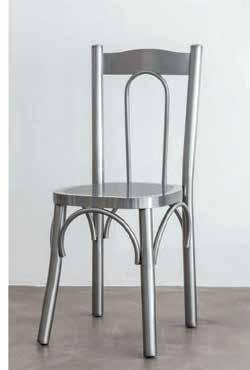
Excited and challenged, they set to work, funding much of it themselves. Over four days last October 2024, We Design Beirut took place at iconic locations like the Abroyan Factory, Villa Mokbel, Cinéma Royal, and PSLab, featuring exhibitions, studio visits, installations, and workshops. The event showcased local talent while celebrating Beirut’s cultural heritage with a multidisciplinary program focused on sustainability (“We Sustain”), support for local crafts (“We Empower”), and preserving Lebanon’s design heritage (“We Preserve”).
“We Design Beirut was a call to action,” said Al Ameen. “ It’s about giving place and voice to the

creative people. It’s our responsibility to do so.”
The exhibitions attracted hundreds of artisans, students, designers, and thousands of visitors from Lebanon and worldwide.
It was a resounding success, with its impact still felt in designers’ circles, whether through students traveling to Milan for workshops or artisans finding their foothold in the design world.
Today, Al Ameen divides his time between Milan and Lebanon, his mind
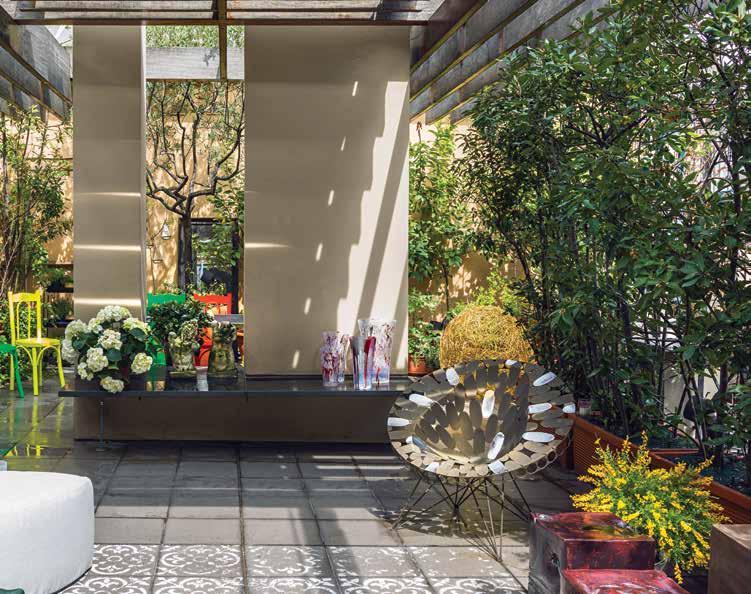
constantly buzzing with new projects. In fact, plans for the next We Design Beirut, Second Edition, are already underway (22-26 October 2025).
“My time is mine,” he said. “I have education, talent, ambition, personality, humor, and no responsibilities holding me back. With all these gifts, I have no excuse not to make something great out of them. I have no right to sit on the couch and do nothing.”
For more information about Samer Al Ameen go to: http://www. sameralameen.com/

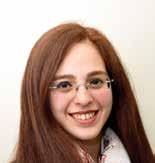
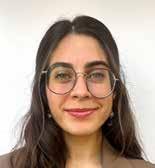
What exactly is Toddle, and how does it support teaching and learning at International College?

Toddle is an all-in-one platform we use at International College for preschool and elementary levels. It is the hub of teaching and learning. It is where teachers plan, teach, learn, and assess. Our units and weekly plans are available, allowing students to access assignments and receive feedback, and parents to track their child’s progress.
What prompted Toddle to invite educators from International College to lead a live session on differentiation?
International College Ras Beirut was recognized by the Toddle team for its innovative use of Toddle AI to support differentiation in the classroom.
Who were the educators involved in the live session, and what was the focus of the presentation?
Two teachers, Ms. Nour Sayegh, a Grade 5 homeroom teacher, Ms. Riwa Chatila, a Grade 2 homeroom teacher, and I were involved in the live session. The focus of the presentation was on sharing and showcasing concrete examples of how we have tailored learning experiences for each student using Toddle AI, creating more personalized and engaging learning experiences for our students.

How does Toddle support differentiated learning at International College, and what did you showcase in the live session?
We demonstrated how we used Toddle AI to evaluate our learning experiences and improve them, ensuring differentiation. We have used it to create rubrics, learning menus, and choice boards, as well as suggestions for different resources to meet various student needs and learning preferences.
How does Toddle support collaboration among teachers, students, and parents?
Toddle offers a unified platform that brings teachers, students, and parents together through several key collaborative features such as Curriculum & Lesson Planning where teachers can co-author and share curriculum
maps, unit plans, and weekly lesson plans, student Portfolios & Evidence Collection, family Communication Hub (Announcements & Newsfeed: Post school-wide notices or class updates), Progress Reports & Report Cards.
Parents can access these instantly online, with comments from both homeroom and specialist teachers woven into a single view, and the Professional Development & Resource Library.
How has using Toddle changed the day-to-day classroom experience for teachers and students at International College?
Since adopting Toddle, our classroom dynamics have undergone a significant transformation. Teachers can now generate several, richer, more varied learning experiences. Our educators can now evaluate their learning experiences and design lessons that cater to the needs of every learner. Approaches to Learning Skills are now explicitly taught and integrated into our learning experiences, ensuring that students develop critical thinking, collaboration, and self-management in every lesson. Even rubrics can now be easily created, clarifying expectations.
Platform Icon Main Purpose Key Features Primary Users
Toddle ����
Google Workspace ����
Zoom for Education ����
ManageBac ����
Pronote ����
Eduka ����
Collaborative platform for curriculum planning, teaching, and assessment.
Real-time collaboration and sharing.
Video conferencing tailored for virtual learning and remote teaching.
Curriculum planning, assessment, and reporting platform for IB schools.
School information system for student grades, reporting, and class scheduling.
School administration and parent communication platform.
Lesson planning, portfolios, assessments, report cards K-5, family communication.
Gmail, Docs, Drive, Calendar, Meet; Cloudbased collaboration tools.
HD video/audio, breakout rooms, whiteboard, recording, secure access.
Unit planners, gradebooks, report cards, service learning.
Attendance, grades 6 -12 report cards, and communication with families.
Admissions, student records, parent portals, messaging tools.
Teachers, students, parents, admin, staff
Teachers, students, parents, admin, staff
Teachers, students, parents, admin, staff and non-IC guests
Teachers, students, administrators
Administrators, teachers, students, parents
Administrators, parents

On February 4, the Arabic Language Department for Non-Native Speakers at the Middle School welcomed Board member John McCarthy as a guest speaker for 80 eighth-grade students in both the English and French sections. He shared his inspiring journey of learning Arabic, which began in 1964, encouraging students in their study of “Language and Expression.”

ICstarted late but finished strong, earning multiple golds thanks to the athletes’ determination, great coaching, and a new strength program.
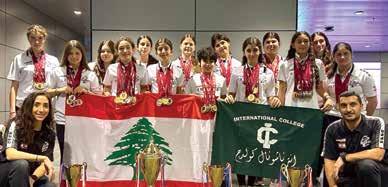
IC athletes dominated NESAC Season Two, winning six of eight championships and medaling in all events. Varsity Basketball won gold in Kuwait. In Abu Dhabi, the JV Boys’ Soccer team won, and the JV Girls’ placed second, while both JV Basketball teams won gold the following weekend. In Dubai, the Varsity Boys’ Soccer team won after a penalty shootout, and the Varsity Girls’ Soccer team finished third.
After missing NESAC Season One, IC made a powerful comeback at the Sportlogy Invitational in Qatar, dominating over 1,500 races to claim overall first place.
63 Gold (U18)
40 Silver (U16)
36 Bronze (U14)
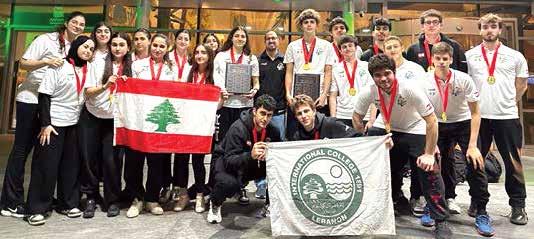
President Tobin Wait and the directors celebrated the successes of IC’s JV and Varsity teams in NESAC Season 2 upon their return to Lebanon.
The Track & Field and Cross-Country teams competed in all invitationals, with 60 athletes participating in the ACS Christmas Run and delivering a strong performance at Jamhour.
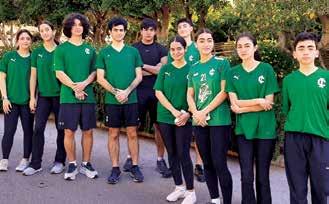
For the first time, the Varsity Girls’ Basketball Team won the USJ Invitational, marking their third title of the season.


Play it
Forward X ACS Basketball and Soccer Tournaments:
Our JV and Varsity Basketball and Soccer teams excelled at the Play it Forward X ACS Tournaments with impressive results.
Soccer:
JV Boys - Champions
JV Girls - Runners-up
Varsity Boys - Runners-up
Varsity Girls - Runners-up
Basketball:
Varsity Girls - Champions
Varsity Boys - Runners-up
JV Girls - Champions
IC Athletics pioneered the use of IRS and VAR for FIBA-style coach challenges. This season, we hosted 391 games across four sports in the Alton Reynolds and MS Tournaments, with exciting last-minute wins in the Basketball and Soccer finals.
Basketball:
Varsity Boys - Champions
Varsity Girls - Champions
JV Girls IC RB - Runners-up
JV Boys IC RB - Third Place
IC Athletics builds young athletes’ discipline and teamwork through grassroots programs, regular games, and mixed scrimmages. Recent events include soccer at Fayyaz Greenfield, basketball at RB, and joint AA-RB Track & Field training at AUB.
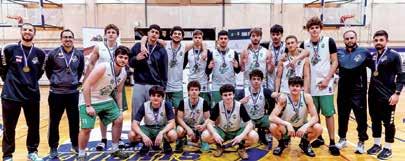

Soccer:
Varsity Girls - Champions
Varsity Boys - Runners-up (Penalties)
JV Girls IC AA - Runners-up (Penalties)
JV Boys IC RB - Runners-up
Volleyball:
Varsity Girls - Bronze Medal
Varsity Boys - Runners-up
Badminton: NESAC- Bahrain
Varsity Girls - First Place
JV Girls - First Place
Ministry of Education - Beirut/ Metn: Volleyball - First Place
JV Girls Soccer - First Place
JV Boys Soccer - First Place
Varsity Boys Basketball - First Place
JV Boys Basketball - First Place
Varsity Girls Basketball - First Place
JV Girls Basketball - First Place
JV Soccer - First Place
NDU Tournament: Track & Field - 3rd Place Overall

Alumni Dinner, Beit Ward February 7, 2025
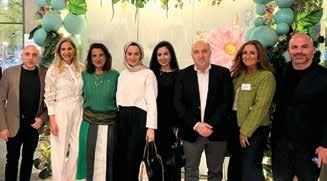
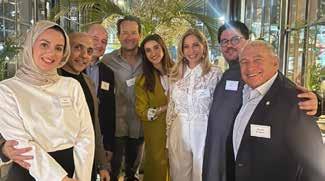

Riyadh gathering hosted by IC Ambassador Mrs. Randa Abla Cherfan February 11, 2025
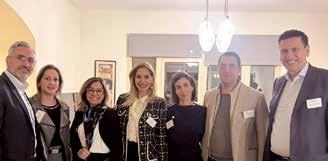
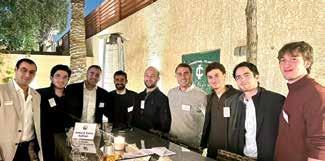

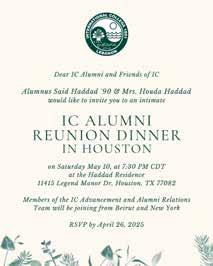
Alumni Reunion Dinner hosted by Mr. Said
May 10,
and

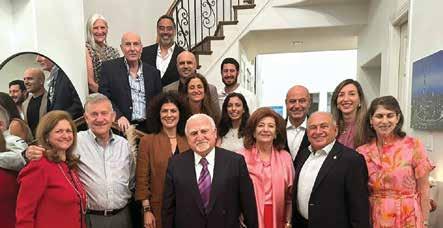
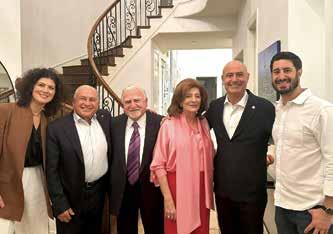
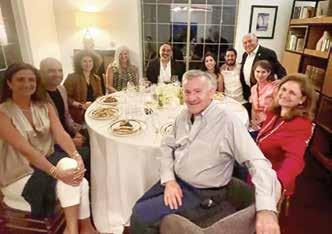
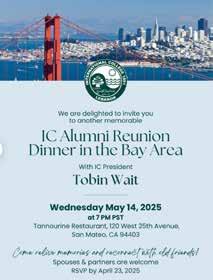
May 14, 2025

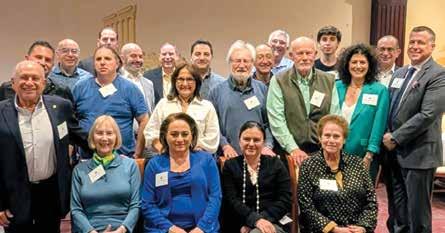
First row: Moufid Beydoun ‘64, Regina Anavy, Hanan Owayni, Lana Kreidie ‘97, Linda Bowers
Second row: Yehya Beydoun ‘00, Ahmad Houssam Tarakji ‘88, Marina Nassoura, Ralph Anavy ‘58, John Bowers , Rania Daouk Turk ‘91, Toby Wait
Last row: Shafic Oueini ‘87, Marwan Manneh ‘97, Khaled Itani ‘98, Ramzi Nassoura ‘80, Marwan Dakroub ‘05, Amer El Hage ‘73, Louay Owayni ‘73, Fouad Sinno ‘22, Raja Petrakian ‘82
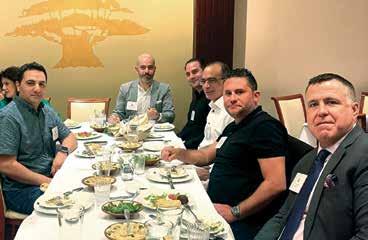

Reunion Dinner honouring Reem Acra ’79
May 21, 2025

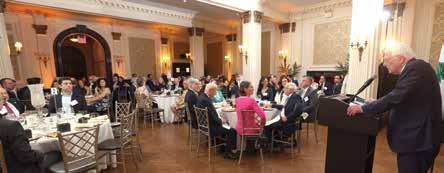

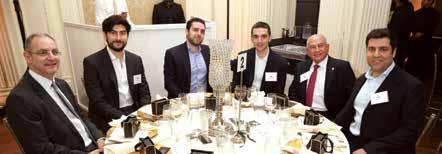
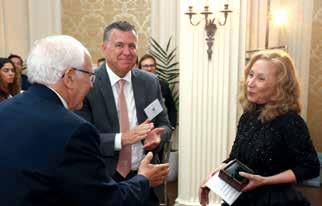
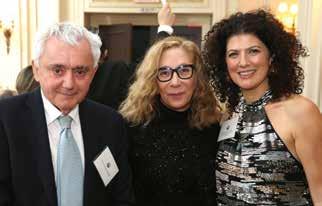
Honouring H.E. Dr. Nawaf Salam ‘71, Prime Minister of Lebanon
Fayyaz Greenfield, May 29, 2025


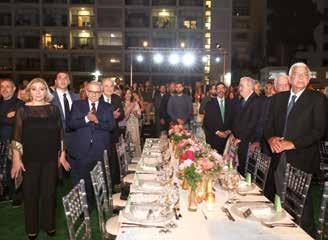
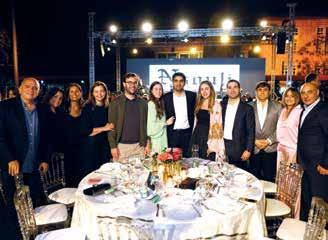
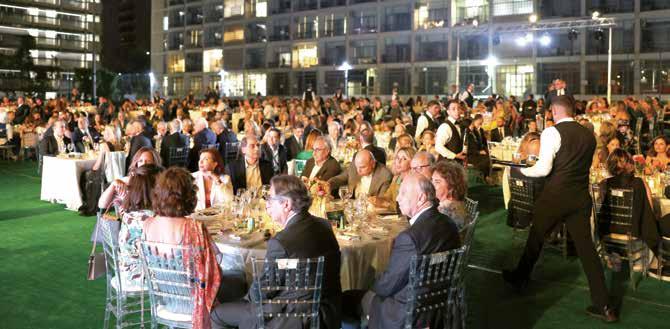



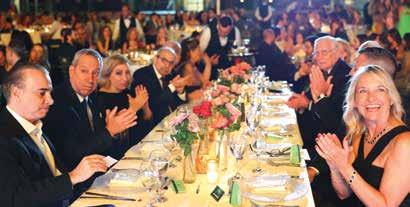
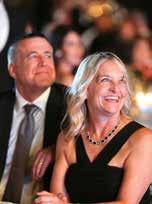
Reception honouring the IC Board of Trustees hosted by the IC Alumni Association Royal Automobile Club June 2, 2025

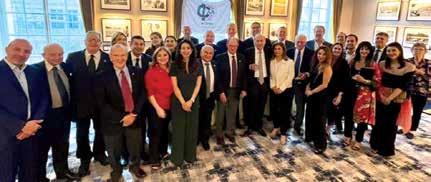

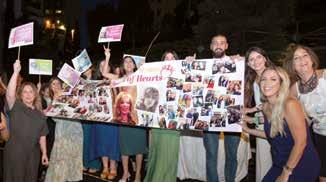
Greenfield May 30, 2025
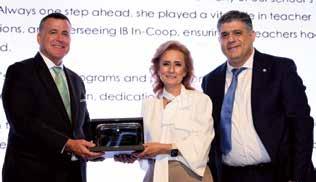
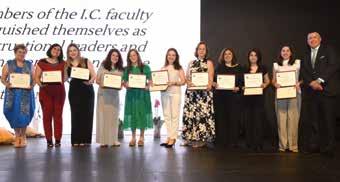

Nicolas Khairallah sent in the following pictures:
With our great professor, Jibran Massoud, who just turned 95. “All our love and respect and best wishes for a longer life with health and happiness “, he writes. “My last visit to our beloved friend and professor, Robert Courson, who for twenty years taught us math at IC,” he writes. “Prof. Courson passed away in March 2025. He had just turned 95.” “Respect and love from all who knew Prof. Courson at IC.”

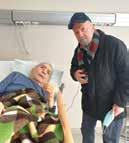
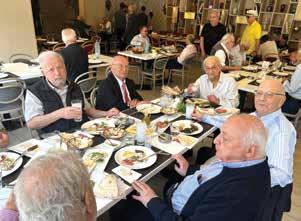
1998 19 60
19 88
Samer Khoder was named a candidate for municipal council on the “Together for a Better Municipality” list, which launched its electoral program under the slogan «ائماد
»(AlJarid First and its People Always). The list promises transparent governance and a developmentfocused agenda to serve the people of Laqlouq.
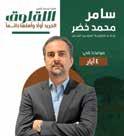
Maha Jaber Younes founded Tributique—a brand inspired by the word tribute—to honor the beauty, culture, and spirit of her homeland.
Tributique has published nine coffee table books that celebrate the richness of Arab heritage, with four more set to launch this October. Through striking visuals and meaningful storytelling, each book brings a sense of identity, memory, and pride into readers’ homes. Tributique.com, tributiquegroup.

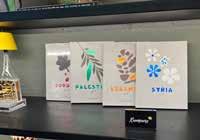
Khalil Shalabi has been living in Austin, TX, with his family since 2014. His youngest, Liam, will be a freshman at Texas A&M in the engineering school.
Khaled Itani recently joined the Stanford University HR team in the beating heart of Silicon Valley, California. After successfully concluding a 12-year career at Google, Khaled brings his experience in Program Management, Talent Development, and Leadership to the Stanford Talent Management and Workforce Strategy team. 19 84
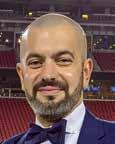

Rani Zakhem, recently featured in Forbes Middle East, made a highprofile return to the runway in January in Kuwait City, unveiling an exclusive Ramadan collection after years of focusing on private clients, including Lebanon’s First Lady. Presented at the Aura of Senses event by FashioNet, the collection blended Arabesque elegance with Western couture, showcasing silk kaftans, vibrant gowns, and inclusive designs tailored for women of all sizes. Zakhem, known for dressing stars like Mariah Carey, Najwa Karam, and Queen Latifah, described the show as “exhilarating” and his creations as a celebration of color, culture, and couture craftsmanship. This marked his first runway appearance since 2018.

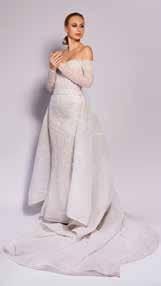


After decades abroad, Ghassan Haddad returned to Lebanon as Chief of Staff to the Minister of Tourism. Motivated by a renewed sense of hope following the formation of a new government, he saw an opportunity to contribute during a pivotal time. Despite ongoing challenges — from economic crisis to regional instability — Ghassan describes the work as intense but deeply rewarding. “What stands out most,” he notes, “is the quiet resilience and determination of people who still believe in rebuilding.”
He invites friends and alumni to visit, support, and be part of Lebanon’s recovery. “If we can plant a few seeds this year — for transparency, digitisation, and a tourism sector that reflects Lebanon’s true potential — it will be worth it.”
Lana Yassine sent in the following: “IC shaped more than just my education; it taught me what leadership really means. I didn’t fully understand why IC used to focus so much on the word “leadership” until my first semester at university, when I noticed how I stepped into leading roles and spoke publicly with confidence - even as others nearing graduation still struggled - which also carried into my professional life.
That early foundation gave me the courage to pursue my passion. My work, including my photography and university projects, has been published in local newspapers as well as international books and magazines.
Today, I run By Lana Yassine, a leading Lebanese gift and stationery brand that makes people smile, reflect, and feel seen. I built everything from scratch, from business plan and ideation, to learning how to build a website, lifestyle product photography, running a business, managing ads, and so on.
This year, we hosted our first-ever workshop, bringing together driven, like-minded individuals. After everything Lebanon has been through, it’s been hard to even dream about the future, which is why we wanted to create a space that inspires hope, motivation, and empowers them to take control of their own journeys.
Watching my business grow and change people’s lives, and ship orders worldwide, is the greatest reward, and I’m excited for what’s still ahead!”

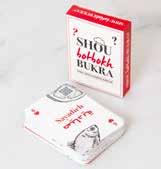

It is with deep sorrow that we share the passing of the following members of our community:
Dr Basim Sayigh ‘67 - October 2024
Ghassan Jahshan ’90 - February 2025
Ghassan Naman ‘61 - February 2025
Robert Courson (former math teacher) - March 2025
Christian Chehab ‘74 - May 2025
Maha Halawi ‘89 - June 2025
Mounir Barakat ’64 - June 2025
IC faculty and staff extend their heartfelt condolences to the families during this difficult time.

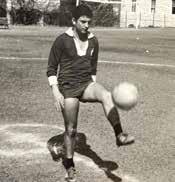
Raja Charafeddine, a proud 1970 graduate of his beloved school, IC, where he led the soccer team as captain, passed away on May 19, 2025. His passion for the school lived on through his sons, Amer and Said, who followed in his footsteps as soccer team captains. After earning his degree in Pharmacy, Raja built a fulfilling career and a joyful life marked by dedication, warmth, and love for his family.
Said Charafeddine ’05
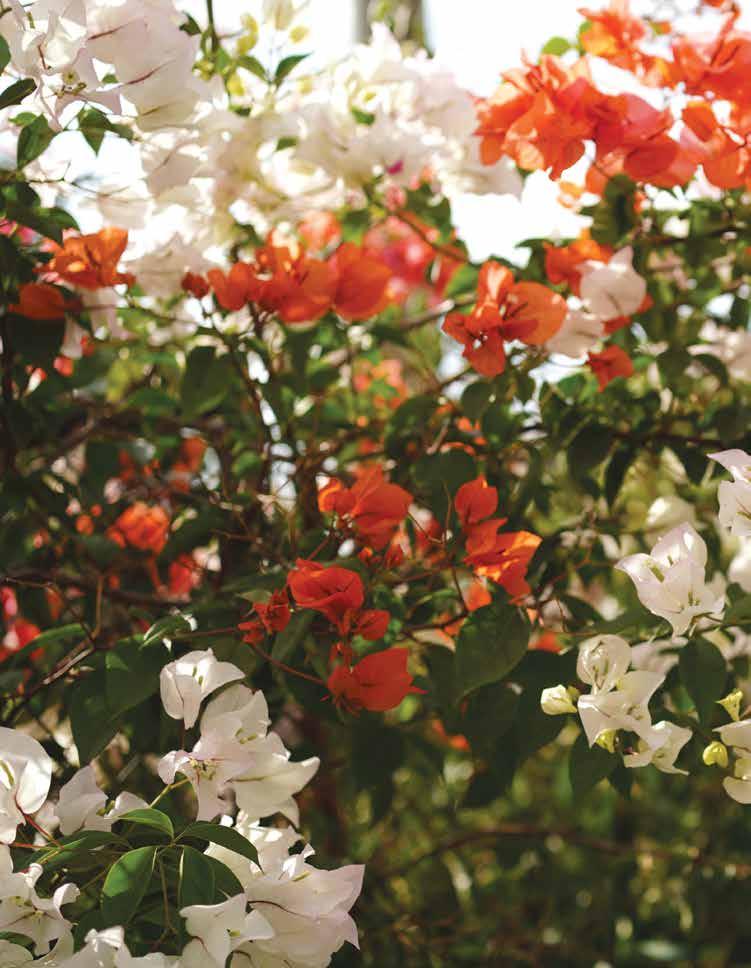
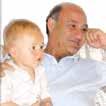
Born on August 11, 1945, he attended IC from 1956 until his graduation in 1963. He then pursued higher education at London University, earning his structural engineering degree in 1968.
In 1970, he joined CAT Co. as Assistant to the Managing Director, and over the decades, rose to become a partner and director of the company. His leadership extended well beyond CAT Co., with numerous directorships including Banque SBA in Paris (1992–2006), the International Pipeline & Offshore Contractors Association (2005–2007), and chairmanships of the Saab Charitable Foundation, Altime Tourist Complex, BETON S.A.L., and the Shammas Economic Institute Ltd.
In 1998, Issam was elected Mayor of Rabieh Municipality in Lebanon, where he served diligently, often unopposed, for a decade. Residents credited him with maintaining the charm and property values of Rabieh, a legacy built on his father’s vision for the community.
A devoted family man, Issam married Susan Hall-Keen in 1971. Together, they raised three children: Sara, Zalfa, and Nicholas.
Issam’s deep connection to IC remained throughout his life. He fondly recalled his days in the scouts, participating in folk dancing events, and forming lifelong friendships. He later served on the IC Board of Trustees and was proud to support the school’s vision and growth.
Among his proudest personal achievements was being described by a close colleague as “the glue that holds us together”—a testament to his unwavering commitment to his family and company. Issam often credited his father as his most significant influence, having worked closely with him for 25 years following his father’s stroke.
International College remembers Issam Shammas not only as an alumnus, but as a devoted supporter, wise leader, and generous contributor to the IC community and beyond. His legacy lives on in the many institutions, projects, and lives he helped shape.

June 5, 1972 – February 6, 2025
Ghassan Khalil Jahshan was laid to rest in Mount Pleasant Cemetery in Toronto, Canada, surrounded by his children Nadim and Rita, his wife Najla, his loving siblings Jibran Jahshan ’82, and Maya Jahshan ‘85, his mother Sonia Bassila, and his many friends, colleagues, and extended scouts family who all mourn his early passing.
A dedicated father, brother, son, husband, and friend, he remained a scout with Beirut 1 from age 4 to 30, where his giving and nurturing soul flourished, and his love of nature and the great outdoors developed. After a BS in Finance from LAU in 1993, he carried lessons of citizenship, duty and service, through his career in finance and audit, from KPMG in Beirut, to head of Audit at Abu Dhabi University, and finally to CFO position in Canada, where he moved his family in 2016.
Ghassan gave endlessly and unselfishly, teaching many at work and extending kindness to all who crossed his path, always projecting positivity and can-do attitude.
Please keep him and his family in your prayers and honor his memory by doing community work, giving to those that are in need, mentoring and coaching people in citizenship and duty, and supporting the Lebanese Boy Scout movement, Beirut 1, which was so dear to his heart.
His family will hold a service in the summer of 2025 in Beirut, and there will be celebrations of life in Canada, California, and Beirut.
Submitted by the Jahshan family
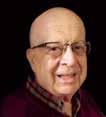
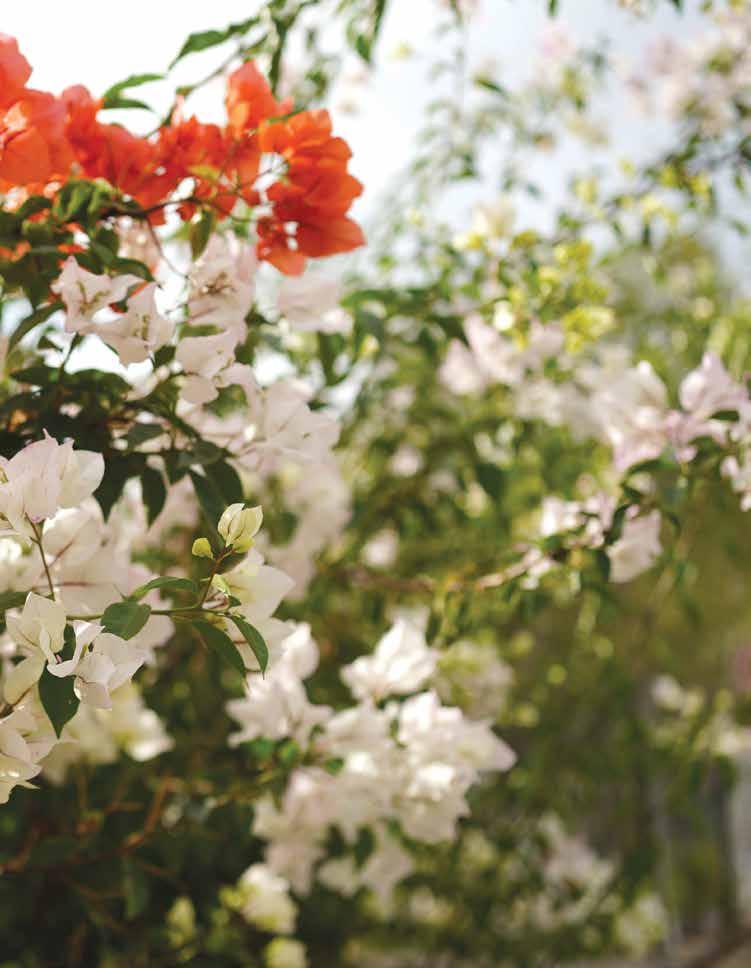
Dr. Munir J. Katul passed away peacefully on April 7, 2025.
Born on August 28, 1937, in Jerusalem, Palestine, he was the youngest of three sons to Jibrail and Alice Katul. His family fled during the 1947 Palestinian exodus and resettled in Beirut. Munir attended International College and began medical school at the American University of Beirut before continuing his training in the U.S. He specialized in urology at the University of Rochester, where he met Gail, a nurse. They married in 1964 and had three daughters.
After briefly returning to Lebanon, Munir settled in Oregon in 1969. He opened a urology practice in Springfield in 1971—the city’s first—and became a leader in the medical community.
Following retirement in 1997, he dedicated himself to public service. He chaired the Eugene Police Commission and Civilian Review Board and served on the boards of several local organizations. A strong advocate for justice, he remained deeply engaged in civic life.
Munir was preceded in death by his wife, Gail. He is survived by his daughters Randa, Nadia (Eric), and Sonia (Josh), six grandchildren, and extended family around the world.
Submitted by Munir Katul ‘s family.
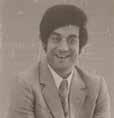
Nimr Ibrahim joined International College in 1965 as an instructor in history and geography.
To fellow faculty members he was a most personable colleague, and students gratefully remember him as a most inspiring and effective teacher, passionate about history, always ready to listen to them with deep understanding and sympathy, and mentoring them with wisdom and compassion, whether as teacher or boarding department supervisor. He was one of the most popular teachers at IC, and a loyal and supportive member of the faculty.
When IC moved to Meshref in the early 1970s, Nimr Ibrahim moved with the school, where he met his wife-to-be, English teacher, Marion “Marti” Schickel. During the turbulent time of unrest in Lebanon he played a pivotal role in keeping at bay some heavily armed elements who wanted to occupy the strategically located campus high on a mountain overlooking the Mediterranean Sea. Over several weeks, through his diplomacy, his understanding of the complicated situations and the nuances of the issues involved, he was able to defuse the danger while sipping tea with the armed leaders.
Ultimately, however, the situation became untenable, and he decided to move to the US in 1976. There, he was for 22 years Director of Development at the New York office of American University of Beirut. After retiring from AUB in 2003, he later took on the position of Senior Vice President for Development at the New York Office of IC, ending his career in 2009 with the institution where it began. He passed away in Montclair, New Jersey, on 25 April 2025, and is survived by his wife Marti Ibrahim, daughters Laila and Rima, and grandchildren Nathan, Timothy, Andrew, and Samuel.
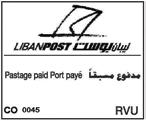
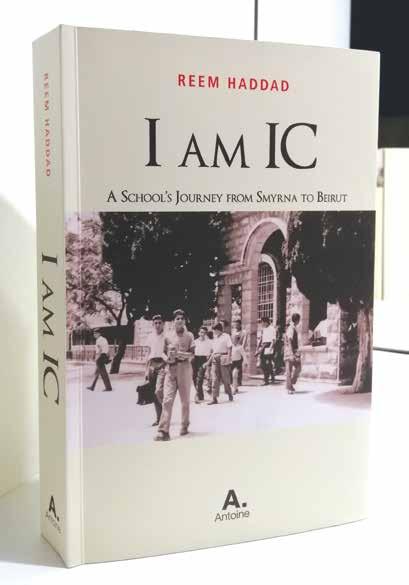
International College
P.O. Box 113-5373, Beirut, Lebanon.
Tel. 961 1 367420/33, Email: alumni@ic.edu.lb
305 East 47th Street, 10th Floor, New York, NY 10017
Tel. : 212 529 3005, Fax: 212 529 8525. Email: icny@intlcollegeny.com www.ic.edu.lb